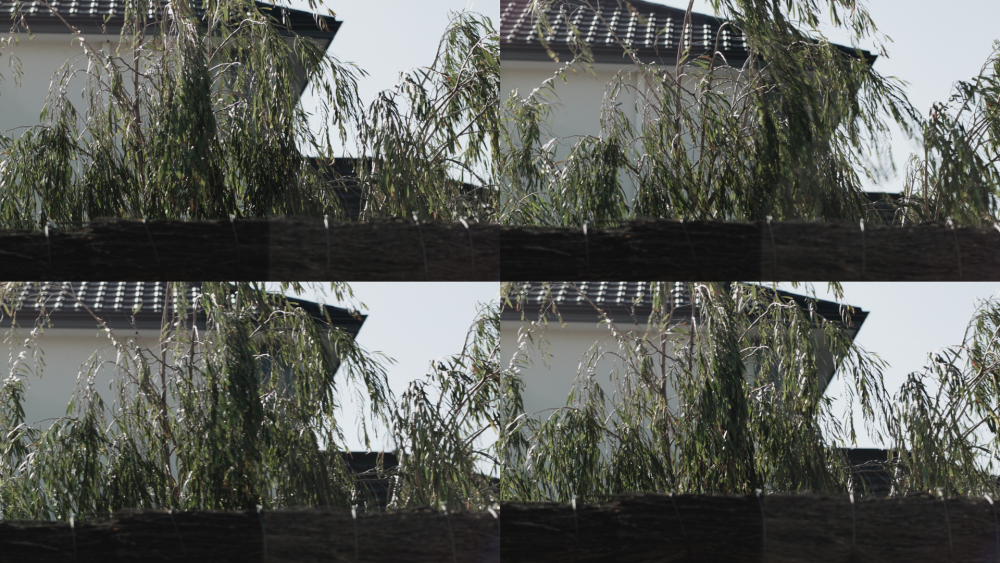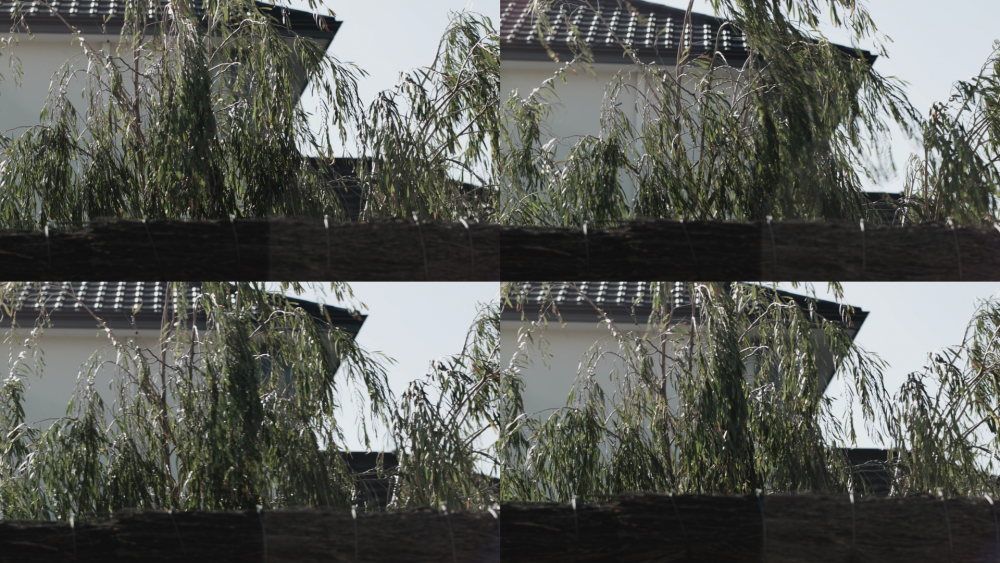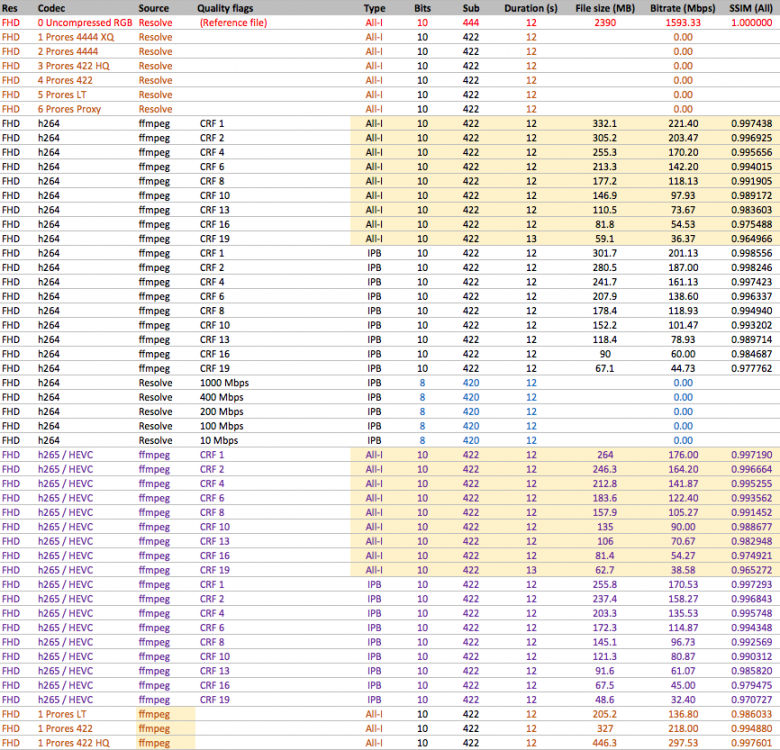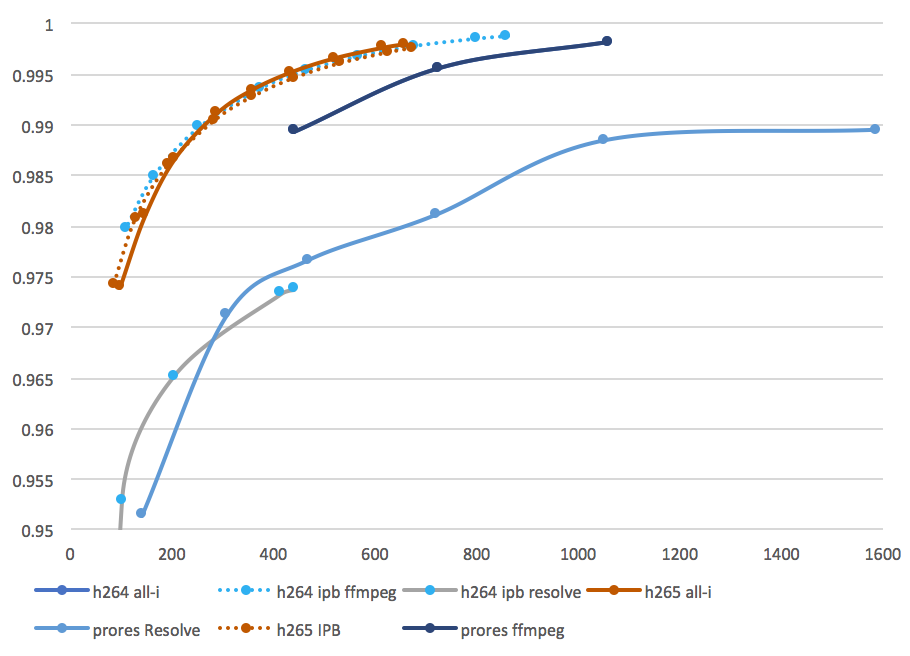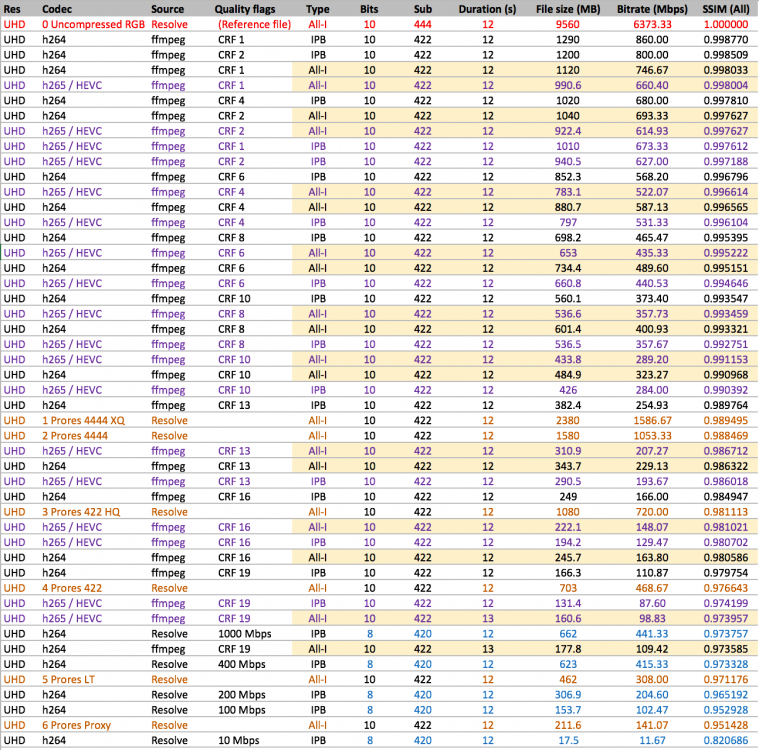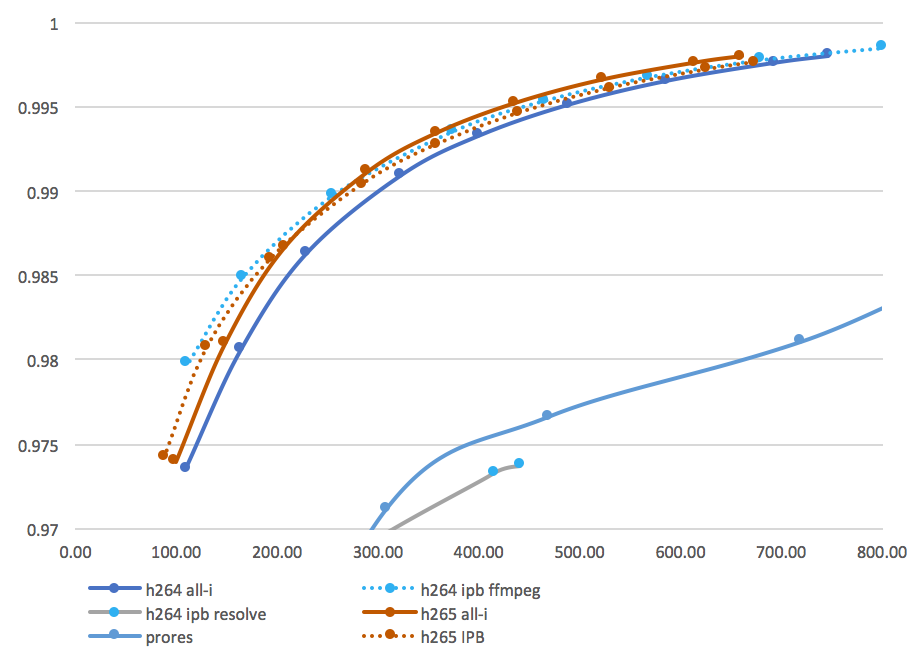-
Posts
7,995 -
Joined
-
Last visited
Content Type
Profiles
Forums
Articles
Everything posted by kye
-
Brandon Li with a short film shot on A7s3, plus his impressions and some zoomed in examples of noise, IQ, and AF tracking etc. Quite a useful video it seems:
-
Just watched this and thought it was really interesting - I haven't seen this mentioned before anywhere. I've played with editing to music and was never sure if I should put an edit on the nearest frame before or after the beat, but never thought about moving the edit point deliberately away from the audio queue. It was an interesting aesthetic, even through YT compression. What did you see?
-
TLDW; he didn't cancel but ended it on a cliffhanger. He did talk about being productive instead of focusing on equipment though.
-

Canon EOS R5 overheated in my fridge! After just 60 JPEGs! (4 °C ambient)
kye replied to Andrew - EOSHD's topic in Cameras
Or making sure they never acknowledge that he was right so that in the 'official' narrative he continues to have a question-mark next to his name in the eyes of consumers regarding his track record. If Canon never acknowledge it then the memories of the event may well be reduced to: What happened to that R5 overheating thing? I don't know - that guy was making all sorts of accusations, something about it overheated in his fridge? Was it real? Did Canon actually stuff it up? They never said anything, and cameras were hard to get at the start, so maybe Was it a faulty unit? Maybe, but I never heard anything about a recall except some talk about something secret I searched the other day and I just got internet people talking, so who knows. And cameras like that ALWAYS have supply problems at the start It must be because EVERYONE wanted one Yeah - it is a great camera - 8K RAW is amazing People must have been beating at Canons door! HAHA, all the VIPs wanted to skip the queue! THE R5 IS AWESOME!! CANON IS AWESOME!!! CANON FOREVER!!!!!!! If they acknowledge it, that narrative gets changed in a lot of people's heads. -
It's time to stop fetishising Prores - h264 422 10-bit ALL-I and h265 422 10-bit ALL-I codecs are better than Prores at the same bitrate, and h265 doesn't have much advantage over h264 either, so you're better off with h264 because it's very friendly in post and shouldn't require transcoding. Vertical axis is better IQ, and horizontal axis is bitrate - read more here: Anyone who has ever watched their AF system focus on the wrong thing should know that AF isn't about how many dual pixels you have, when they're focusing on the wrong thing then your shot is still ruined. I switched to manual focus and have never looked back. Currently my GH5 is still kicking all these cameras asses, because of the firmware updates it got and these camera MIGHT get. You're all jumping at shadows - until these cameras either do (or don't) get higher bitrate ALL-I codecs then it's all conjecture. Panasonic have hinted very strongly that a GH camera is coming, and wether this is true or not doesn't really matter - some or all of these cameras will get firmware updates to hugely upgrade them, and if they don't then it will be because there's another camera that will come in and take a place higher up in the lineup. Chill and let the dust settle. Or, more likely, wait until all the options have even been put on the table, then let the dust settle, even just a little....
-
Another Komodo impressions video with some sample footage and some criticisms (plus an R5 joke!):
-
True, but with the caveat that it's comparing Prores with h264 221Mbps 10-bit 422 ALL-I. Not many cameras can shoot that, even in FHD!
-
Absolutely spectacular!
-
Yes. I got the second edition. I made it up to p95 yesterday, skipping a lot of things that weren't relevant or I already knew. It's a case of some things stay the same and other things change fast... The section talking about codecs was talking about using Prores and DNxHD and how consumer formats are to be avoided if possible. But then it talks about h264 and mentions how it's typically 48-72Mbps and 420 8-bit, so obviously that's not the case anymore. There's a side section about rec2020 (which is the colour space for HDR) and how there are jokes that displays that can display rec2020 won't be available until 2020! It then has a note saying that if you're reading the book from the future then to be kind about their horrendous optimisim / pessimism (depending on what actually happened). On the other hand, techniques for getting the right contrast or using colour wheels to adjust tint in shadows/mids/highlights hasn't changed and may never change.
-
Be careful with this - the EF mount has more flange distance than the FD mount and converting can mean that the adapted lens doesn't fit on some speed boosters. This was from the recent video by Media Division:
-
The more I fall down the colour grading rabbit hole, the more I realise how deep it goes. I've kind of developed two parallel (and perhaps not compatible) concepts around colour grading: The first is that those of us that work on lower-budget / no-budget / small-crew / no-crew productions are at a tremendous disadvantage. This is because: A good grade starts on the set with location selection, shoot schedules, set design, costume, hair, etc, and we may have less control, or no control, over those things. This means that while on a large budget show they can ensure that professionals who have been applying colour theory for 20 years made sure that every object on the set supports the colour scheme that will reinforce the emotional and aesthetic experience of the images to support the project, even before anyone arrives to shoot. A good grade also benefits from great lighting design and execution. Large budget productions can do things like have heaps of lights further away from the scene, might have time to tailor lighting to every setup individually, etc. A great camera (that most of us aren't shooting with because we can't afford it) will shoot with higher bitrates and more robust codecs, allowing more flexibility in post. Plus, the colour science of many manufacturers is nicer on their flagship cine cameras than it is on the budget models or hybrids. **Edit: This is actually something that is changing now, with P4K/P6K etc offering un-crippled codecs, bitrates, and colour science. Additionally to this, and while I won't speak for others here it's definitely something I suffer from, is that sometimes the cinematographer (me!) royally screws the pooch on shots! In this sense, our job is actually much more difficult because when we sit down to grade the footage is less robust and needs more work (and in my case often needs urgent medical attention!) so the difference between the source footage and greatness is that much larger to span. The second concept I have developed is that it's not the first concept above that is the dominating factor, but that colouring is far more difficult than people make it out to be and that colourists are actually far more skilled than how we (or I) think about them. My recent posts in the XC10 thread showing the noise in that Cinque Terre image is a case in point. It's got horrible 8-bit LOG noise, but I stumbled upon something that seems to magically rescue the image. How many of these techniques are colourists using all the time and that's just part of the job? Who knows. Things I've read from colourists include: If it's well shot I just adjust levels and primaries and the image pops into place Yes, the Alexa often skews towards green, no problem, just grade it out That project had some issues so I just had to work through them with power windows and pulling keys I'm starting to have a sneaking suspicion that these comments (from professionals who have a reputation to uphold) mask that they might be regularly getting fed awful and damaged images where sometimes they have to pull out all the stops, and maybe a dozen or so power windows to adjust every freaking little thing on some horrible images, to get something that looks like there was no problem in the first place. I'm actually testing this theory by collecting a bunch of RAW sample footage from ARRI, RED, and others and going to start grading it. It should be a good reality check around how difficult my footage is to grade rather than what these manufacturers put on their websites as example footage, which should be basically problem free. Anyway, one thing I read from a colourist once was that "if the image looks good, it is good" so if you've got a workflow that works for you, declare victory on the project and move on with your life 🙂 Thanks Chris - you too! I think I've also got a solid understanding of the basics, at least on a technical level. I'm hoping more for hints around 1) how to recognise why an image might look 'funny' and what to do about it, and 2) how to take an image that looks OK and turn it into something that pops a bit more. I've picked up a bunch of ideas from various colour grading videos, but hoping to get a more systematic approach. I kind of feel like the YT colourists talk about the 'tricks' but don't cover the fundamentals, so it's like I'm cooking with rubbish ingredients and the wrong recipe but I've got 100 suggestions about what spices to use to finish it off. I'd be curious too. Noam Kroll is someone I read regularly and I've seen that he's got LUT packs and the like for sale, but haven't really got a sense of how good they are. Almost everyone online has LUT packs for sale, except the professional colourists who talk about the fundamentals. I suspect they also know all the 'tricks' but they probably don't want to give them away.
-
I was recommended the Colour Correction Handbook - Second Edition by Alexis Van Hurkman so I ordered it. It just arrived today, and I am having trouble remembering a time when I was so excited about a book. I wasn't excited when it arrived, I only got excited when I started reading through the contents page, and flicking through some of the chapters. It's like every heading is a thing I've been wondering and struggling with. At first glance it looks like a good mix of technical stuff, techniques, and creative applications. and the best part? It's over 600 pages!
-

EOSHD testing finds Canon EOS R5 overheating to be fake
kye replied to Andrew - EOSHD's topic in Cameras
Matti credited EOSHD in this video... but didn't link here. 46K views after being up for 15 hours. -
Compared to my current machine, the spec I'm looking at will be 2.6x as powerful, and that's CPU alone. Benchmarks for the GPU will be almost double. That's before we get to the T2 Chip which the new one will have over this one. Then if I decide to upgrade my eGPU, well.... Exporting some trials now. It occurs to me that the previous way I was exporting was Quicktime -> h264 so I'm trying MP4 -> h264 which has more arguments. On OSX and my dated Resolve I only have encoding profiles of Auto, Base, Main, and High. I also have multi-pass mode, so I've queued up a few combinations of those. Slowly but surely...
-
Yeah, that wouldn't make sense.
-
I think we're getting our wires crossed here. Your above test is what I would expect. If you have an 18-55mm f2.8-4 zoom then you would expect for it to be brighter at f2.8 than at f4. If the manufacturer decides to offer a constant aperture 18-44 zoom then it might take that design and just make it 18-55/4, which it can do by taking the 2.8-4 design and changing it so that the 2.8 isn't available at the wide end. ie, crippling the lens.
-
Aperture is literally the ratio of the diameter of the hole to the focal length. At a constant aperture it should approximate a constant exposure. I say "approximate" because exposure takes into account other things like the transparency of the glass and internal reflections etc, but it should be pretty darn close to exact. I suggest you do a test - put the camera into full manual, find a large blank surface, and zoom in and out at constant aperture as well as at maximum aperture and see if the brightness of that surface changes. You should see an increase in exposure (of that reference surface) when you open the aperture when zooming out.
-
I think what @Enjay is saying is that when you design a zoom it's maximum aperture will always be larger on the wide end, so in order to make a constant aperture zoom they just design it so that it closes down at the wide end to match the maximum aperture of the long end. In this sense, if you had a variable aperture zoom, say an 18-55mm f3.5-5.6, then you could just set it to f5.6 and then zoom in and out and you'd have the benefits of a constant aperture, as well as being able to open up wider than f5.6 in the middle and at the wider end.
-
Prores from ffmpeg is significantly different - different bitrates and performance. Obviously this is rabbit hole I'm going to be falling down for a while!
-
Just found out that ffmpeg can encode to Prores. The tests continue!
-
This is interesting / surprising. Do you mean that the Colour Space Transform is wrong? I have found with the "cheaper" cameras (XC10, GH5) that its unclear what colour profiles they align with and no clear answers online. I just assumed that the C-Log in the XC10 would be the first version and that the CS would be Canon Cinema Gamut but I guess not. It was billed as being able to be processed along with footage from the other cine line cameras and was completely compatible, although @jgharding mentioned above that this wasn't the case in reality. I'm not against grading it manually, so that's not an issue. I've been wondering what the best approach is to grading flat footage. I've got about half-a-dozen projects in post at the moment with XC10 "C-Log", GH5 "HLG", GoPro Protune, and Sony X3000 "natural" which are all flat profiles with no direct support in CST / RCM / ACES. I was thinking one of my next tests would be to grab some shots and grade them using: LGG Contrast/Pivot Curves CST to rec709 then LGG CST to rec709 then Contrast/Pivot CST to rec709 then Curves CST to Log-C then LGG CST to Log-C then Contrast/Pivot CST to Log-C then Curves etc? to try and get a sense of how each one handles contrast and the various curves. I was hoping to get a feel for each of them to understand which I liked and when I might use each one. I suspect that curves will be the one as I will be able to compress/expand various regions of the luma range depending on the individual shot. For example I might have two shots, one where there is information in the scene across the luma range and I would only want to have gentle manipulations, but a second shot might have the foreground all below 60IRE and then the sky might be between 90-100IRE, in which case I might want to eliminate the 60-90IRE range and make the most of the limited gamma of rec709, bringing up the foreground without crushing the sky. What's that saying... "I was put on earth to accomplish a number of things - I'm so far behind I will never die". I have sooooo much work to do.





